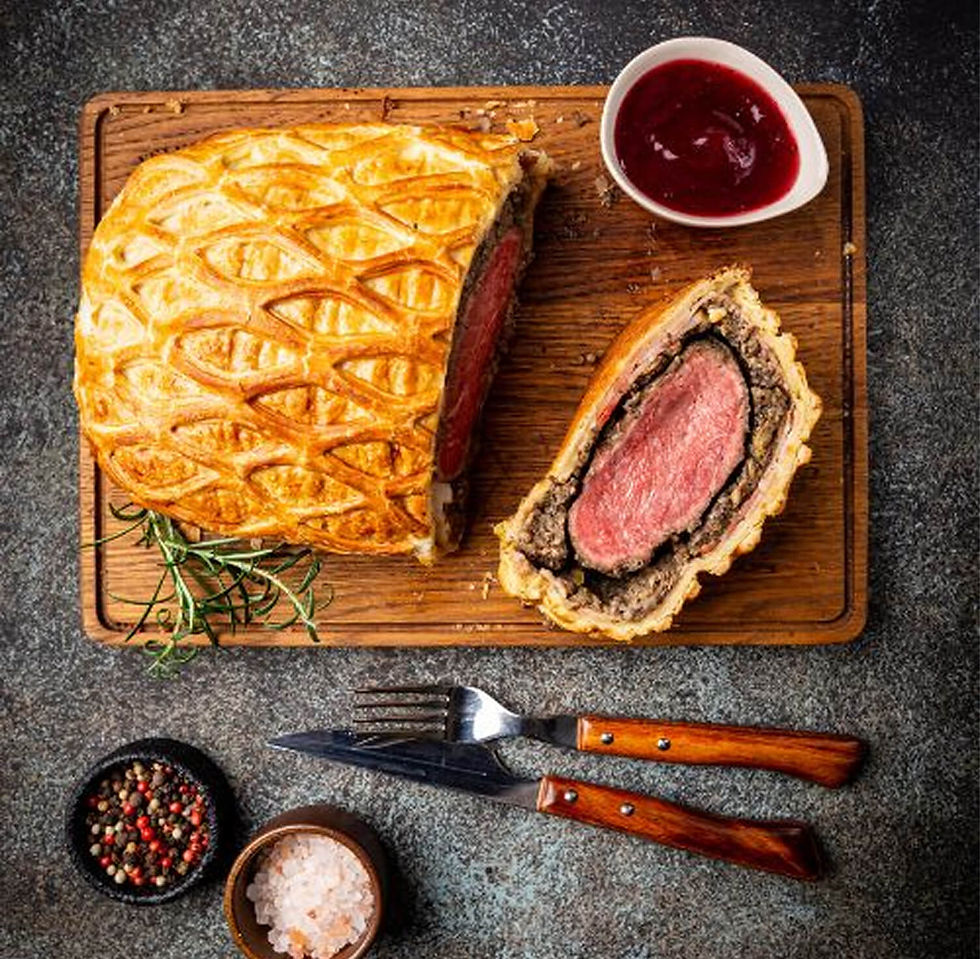Unveiling Convolutional Neural Networks (CNNs): The Powerhouse of Computer Vision
- Debopriya Lahiri

- Mar 26
- 3 min read
Updated: Apr 2
Entering the World of AI Vision
Ever wondered how your phone unlocks just by looking at your face? Or how apps like Google Lens instantly recognize objects? The answer lies in Convolutional Neural Networks (CNNs)—a game-changing technology in artificial intelligence that enables machines to see and understand the world like humans. But how does it all work? Let’s find out!
Test Your Knowledge!
Which of these is a real-world application of CNNs?
a) Medical Image Analysis
b) Self-Driving Cars
c) Facial Recognition
d) All of the above
From Concept to Reality: The Evolution of CNNs
Before CNNs, image processing relied on manually designed features, making it inefficient for complex patterns. Inspired by the human brain’s visual system, CNNs emerged in the 1980s and took off in the 2010s with deep learning breakthroughs.
One of the earliest CNNs, LeNet-5, was designed by Yann LeCun in 1998 for digit recognition. Today, CNNs power cutting-edge architectures like AlexNet, VGGNet, ResNet, EfficientNet, and Vision Transformers, driving AI innovations across industries.
Mind-Blowing Fact!
Did you know?
CNNs mimic the visual cortex of the human brain, analyzing images layer by layer—from detecting simple edges to recognizing entire objects!

CNN Architecture: How It Processes Images
A CNN processes an image through multiple layers to extract key features. Let’s break down its structure:
1. Input Layer: The Entry Point
This layer takes in images, whether grayscale (single channel) or RGB (three channels).
2. Convolutional Layer: The Feature Hunter
Filters (kernels) scan the image, detecting patterns like edges, textures, and shapes.
3. Activation Layer (ReLU): Adding Intelligence
The Rectified Linear Unit (ReLU) introduces non-linearity, allowing CNNs to understand complex relationships in images.
4. Pooling Layer: Shrinking Without Losing Quality
This layer reduces the image size while keeping key information. Common types include:
Max Pooling: Picks the highest value in a region.
Average Pooling: Computes the average value in a region.
5. Fully Connected Layer: The Decision Maker
The extracted features are flattened and sent to a neural network for classification (e.g., recognizing cats, dogs, or diseases in medical scans).
6. Output Layer: The Final Verdict
The output layer assigns a probability score to classify the image correctly.

Did You Know?
The 2012 ImageNet competition revolutionized AI when AlexNet, a deep CNN, shattered previous records, marking the rise of deep learning!
Mystery Quiz: The Case of the Missing Algorithm
You're an AI detective investigating a mysterious missing AI model! A renowned scientist claims that a breakthrough CNN model disappeared before its official launch. All that’s left is a cryptic note:
"The answer lies in layers deep, A network trained to never sleep. Connections skipped, the past they keep, A model born where errors creep."
Who is the missing model?
(Hint: Look at the CNN architectures mentioned in this blog! Answer at the end!)
Where Are CNNs Used Today?
CNNs are the backbone of computer vision, fueling innovations across multiple domains:

Another Quiz! Are You Up for the Challenge?
Which CNN model introduced the groundbreaking concept of skip connections in 2015?
a) LeNet-5
b) VGGNet
c) ResNet
d) GoogLeNet
(Answer at the end!)
The Ethics of AI Vision: Should AI See Everything?
While CNNs bring incredible advancements, they also raise ethical concerns. Issues like deepfakes, biased recognition, and AI surveillance spark debates about privacy and fairness. How do we ensure AI remains a force for good?
The Road Ahead: What’s Next for CNNs?
CNNs are evolving toward greater efficiency and real-time processing. Future advancements include:
Lightweight models for mobile applications.
Neuromorphic computing, where AI mimics the human brain more closely.
Explainable AI, making CNNs more transparent and interpretable.
Quiz Answers:
Answer 1: The correct answer is d) All of the above! CNNs are used in medicine, autonomous vehicles, security, and beyond.
Answer 2: The correct answer is c) ResNet! ResNet introduced skip connections to solve the vanishing gradient problem in deep networks.
Mystery Answer: The missing model is ResNet! Its revolutionary "skip connections" allow it to retain past information, solving deep learning challenges.
From medical breakthroughs to self-driving cars, CNNs are revolutionizing how machines interpret visual data. As this technology advances, we edge closer to a future where AI sees and understands just like humans. What are your thoughts on CNNs? Are they the future or a technology to be watched cautiously?
Share your thoughts in the comments! Let’s explore the future of AI together!
techno billion ai, billionai, edtech solutions, techno expert, tbai, techno ai, ai billion, ai techno, techno intelligence
1
Searing the Beef
Sear beef fillets on high heat for 2 minutes per side to form a golden crust. Let it cool before proceeding to keep the beef tender.
1
Searing the Beef
Sear beef fillets on high heat for 2 minutes per side to form a golden crust. Let it cool before proceeding to keep the beef tender.
1
Searing the Beef
Sear beef fillets on high heat for 2 minutes per side to form a golden crust. Let it cool before proceeding to keep the beef tender.
1
Searing the Beef
Sear beef fillets on high heat for 2 minutes per side to form a golden crust. Let it cool before proceeding to keep the beef tender.
Notes



1
Season the good fresh beef fillets with salt and black pepper. Heat olive oil in a pan over high heat and sear the fillets for 2 minutes per side until it fully browned. Remove the beef from the pan and brush with a thin layer of mustard. Let it cool.



1
Season the good fresh beef fillets with salt and black pepper. Heat olive oil in a pan over high heat and sear the fillets for 2 minutes per side until it fully browned. Remove the beef from the pan and brush with a thin layer of mustard. Let it cool.



1
Season the good fresh beef fillets with salt and black pepper. Heat olive oil in a pan over high heat and sear the fillets for 2 minutes per side until it fully browned. Remove the beef from the pan and brush with a thin layer of mustard. Let it cool.



1
Season the good fresh beef fillets with salt and black pepper. Heat olive oil in a pan over high heat and sear the fillets for 2 minutes per side until it fully browned. Remove the beef from the pan and brush with a thin layer of mustard. Let it cool.
Instructions
Quality Fresh 2 beef fillets ( approximately 14 ounces each )
Quality Fresh 2 beef fillets ( approximately 14 ounces each )
Quality Fresh 2 beef fillets ( approximately 14 ounces each )
Beef Wellington

Beef Wellington
Fusion Wizard - Rooftop Eatery in Tokyo
Author Name

Beef Wellington is a luxurious dish featuring tender beef fillet coated with a flavorful mushroom duxelles and wrapped in a golden, flaky puff pastry. Perfect for special occasions, this recipe combines rich flavors and impressive presentation, making it the ultimate centerpiece for any celebration.
Servings :
4 Servings
Calories:
813 calories / Serve
Prep Time
30 mins
Prep Time
30 mins
Prep Time
30 mins
Prep Time
30 mins





Comments